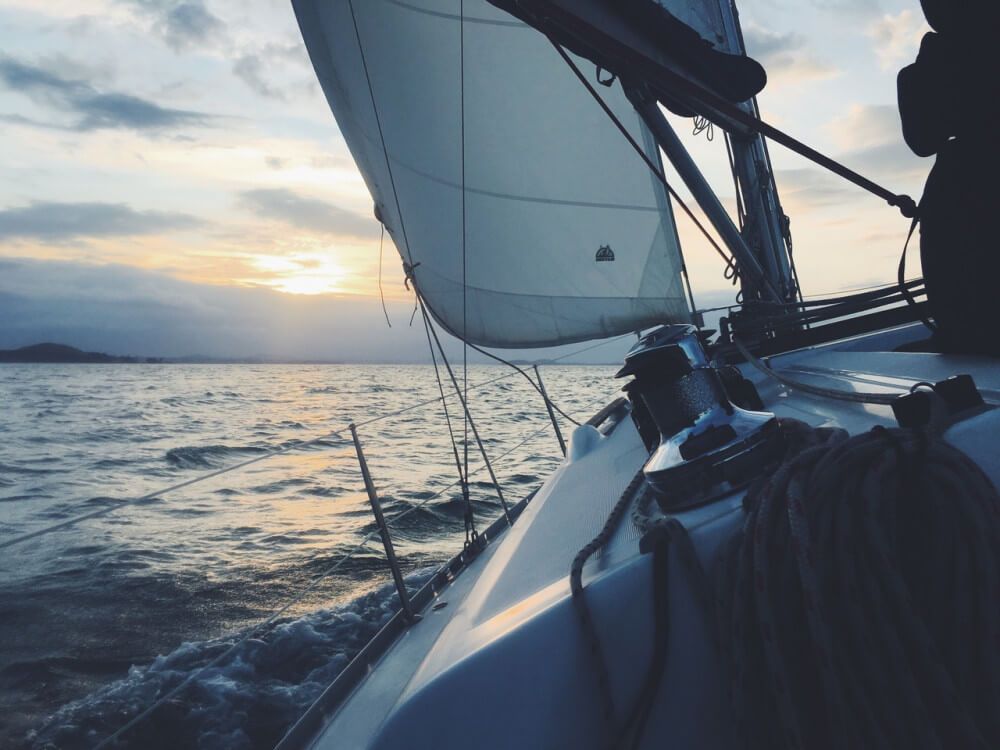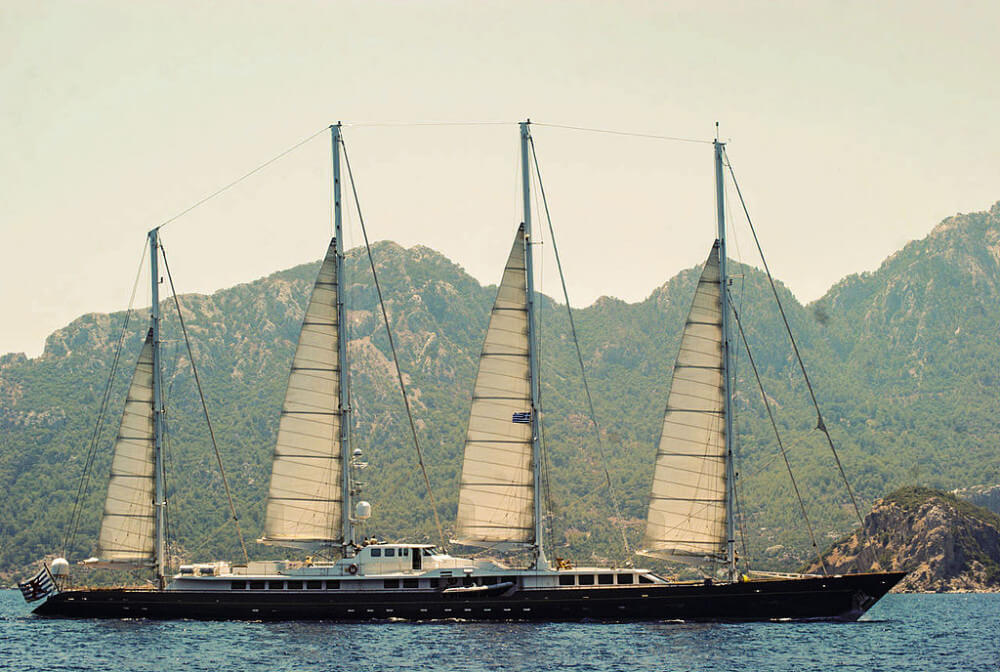What’s the Largest Boat One Person Can Operate?
So you're looking for something big, but want to go at it alone. Sailing single-handed (also known as short-handed) is perfectly doable, although not always ideal. As every 28-year old, I want something over 30 feet - but is it actually practical?
So what’s the largest boat one person can operate? Most experienced sailors seem to stay under 35 feet - anything over 50 feet is uncommon. But there really is no upper limit. It depends on skill, experience, and courage. Generally, if you're a reasonably skilled sailor, you'll be capable of sailing these boats alone:
- Without systems: under 28 ft or 8 m
- With systems: under 46 ft or 14 m
- Typically, experienced sailors stay under 35 ft
- Anything over 50 ft or 15m is uncommon
If the manufacturer bothered to include a crew cabin, it's probably a good idea to have a crew.
Length is not really the issue with short-handed cruising. There is no limit, except for your experience and ability. The real questions are: what do you feel comfortable with; and what's the amount of sailcloth you can safely handle?
Another factor is stability - bigger boats tend to be more stable, and can be operated from the cockpit entirely (with the lines running aft and having remote controls). Besides docking, there really isn't an issue, and larger boats might be more easy to handle on your own than smaller boats having the wrong configuration.

How Many Hands Do You Need?
Apart from the question of whether it's technically possible to sail a boat solo, let's also check whether it's comfortable. Because you're probably not buying a boat to prove anything to anyone (or are you?), but to have a great experience. The following boat lengths are comfortable to sail ...
- single-handed: under 35 feet
- double-handed: 35 - 50 feet
- crew: 50 feet and up
So why is it more comfortable to sail anything over 35 feet double-handed?
Sailing is the easy part - everything else gets more difficult with added length. The biggest limiting factor is how you're planning to dock. Get this right and you've lost your biggest bottleneck. Some marinas offer assisted docking to facilitate single-handed sailing, which can be of great help.
How much does it cost to own a sailboat?
Read our complete sailboat ownership cost guide for a complete overview of all the ownership costs and the purchase cost of a new & used sailboat.
Docking aside, it helps to have someone to handle the lines while you helm the boat.
Another important factor is troubleshooting any (technical) problems when you're on your own. There should be enough people on board to address any problems that come up. If you're not comfortable with possibly having to deal with change in weather, emergency reefing, technical issues, and so on, you should probably consider getting your significant other, or a friend along.
Check what the specific boat is built for. Purpose-built solo racers can be very large (120 ft) and are easy to maneuver single-handed (which isn't to say they're all of a sudden easy to dock - anything big just isn't).
If it isn't about length ...
... then what's it about? I think more important then length is:
- boat layout
- systems and remote control availability - check out the full list of systems below
- home berth conditions - if these are good (upwind, assisted docking, protected water) docking will be way easier
Think in displacement instead of length
Another way to go at it is by thinking in displacement instead of length. The amount of crew you need for the amount of displacement:
- 12 - 30 tonnes: one experienced boat hand or two inexperienced ones
- 30 tonnes and up: an experienced crew
Why Do You Want to Go Big?
Also, consider why you'd want to go big. I would encourage you to really think this through. It's perfectly possible to sail anything over 50 feet solo, but there's a point at which I start to wonder why. This is around the 42' mark. It simply becomes more uncomfortable quickly. So if you don't have any good reason to get a bigger boat besides ego, don't do it - you will probably come to regret it.
On the other end, if you do have a solid reason for needing more length, then please, go for it. Consult yourself to get to the bottom of it. Some legit reasons, I believe, are:
- You're planning to live on the boat
- You're doing multi-day trips and need a place to sleep
- You really like to polish endless amounts of hull surface
How Much Sail Can You Handle?
One sailor can typically manage about 300 - 400 sq ft. of sail. Anything up to and it becomes unmanageable quickly, especially if the weather turns. Following this rule, you can increase your hull length a bit if you choose a boat with more and smaller sails. So you can sail a somewhat larger yawl or ketch.
Things that become difficult on your own:
You can do lots on your own, especially if you have some automation systems in place. But there are some jobs you just can't do without a helping hand.
- getting in and out of the slip
- docking - catching dock lines
- anchoring
- mooring
- standing watch / sleeping
Systems you probably want to consider:
If you're going to sail something over 35' alone you should definitely consider the following systems:
- autopilot for steering
- wind vane
- lines running aft (running to cockpit)
- radar
- electric windlass
- roller furling
- hydraulic bow/stern thrusters with remote
Skills you want to develop and get right:
- Docking: dock, dock again, dock some more. Practice until you can effortlessly maneuver in tight spaces while allowing yourself the time to walk up and down the entire hull length
- Anchoring
- Get the steering configuration right
- Get the right cockpit layout
A great example of how to successfully sail solo:
The downside of sailing a large boat alone
Don't underestimate the power of the wind and tide. The forces you need to deal with are extreme. The longer the boat, the larger the grasp of the wind on your sails becomes. Longer boats are heavier as well, which is why they gain more momentum once they're set in motion. Stopping a 50-footer is difficult - not being able to do so very risky. A larger hull means the tide can get a better hold of you.
Single-handed sailing means that you're solely responsible to manage all of these forces. Also, if something breaks, you're on your own. It can get quite stressful at times. If you don't mind this kind of challenge, and you're in good physical shape, there's no reason to stop dreaming at a certain hull length. Just be aware of what you're signing up for.
Another thing to consider is that larger boats take longer to prepare to make way. You can get a small 26-footer up and running in half an hour, but a 46-footer can just as easily take you up to a week. The time you'll need to spend on maintenance will also increase exponentially.
We all know that anything that takes that too much effort will happen less often. If you want to get out there a lot, get something that's quick to set up.
Preparing for Passages
With any passage, I believe it's best to have at least one other capable sailor on board. This way you have your backup, just in case anything happens; and you greatly reduce any possible (serious) risks.
If you need to go solo because you don't have any (sailing) friends or companions, I highly encourage you to find another (solo) boat and stay within the vicinity and stay in touch throughout. Having some form of backup is in my mind important with these kinds of prolonged trips.
3 Incredible Sailboats You Can Sail Solo
- Phocea - 246 ft or 75 m
- Trimaran Spindrift 2 (Banque Populaire V) - 130 ft or 40 m
- Macif - 100 ft or 30 m

Related Questions
What’s the largest yacht for couples?
With the two of you, the sky is the limit. If you're planning on both learning all sailing skills, that is. With two fully capable sailors on board, there isn't any reason to limit yourself, other than what you're capable of handling based on your experience.
However, if one of you is doing all the work, I would regard it as having one sailor and one pair of helping hands on board. I'd stay in the 35 - 50 ft range at most.
What size boat requires a captain's license?
In the US there isn't a required license based on length, though it's smart to get your license. It allows you to take along paying passengers, which is a great way to earn some extra money and get the extra hands you need on board.
The captain's license consists of a comprehensive exam, helping you to understand coastal navigation, deck knowledge, and rules and regulations. It's a good way to increase your theoretical knowledge, increasing safety on every vessel you set foot on.
A license will cost you between $500 - $800 and lasts for five years. Think you can earn it back by taking some folk along for the weekend?
Also, if you own a large boat (say 50 ft and up) your insurance company may require you to get a license or hire a licensed captain.
How much does it cost to hire a boat captain?
On average, a boat captain cost about $1,000 per year per foot. If you're just hiring for the week, the price is more in the $300 - $400 ballpark. On average, a week trip will cost you:
| length | a week | a year |
|---|---|---|
| 35 ft | $2,500 | $35,000 |
| 40 ft | $2,500 | $40,000 |
| 50 ft | $2,500 | $50,000 |
| 65 ft | $3,000 | $65,000 |
| 80 ft | $3,000 | $80,000 |
| 100 ft | $3,000 | $100,000 |
Did you find the answer to your specific question?
👍 73 👎 1



Comments
Fernando Affonso
Hi, congratulations for your post. It was very clarifying. Rgds
Casey
Shawn, Your post and information was extremely helpful
Thanks very much!
Regards,
Casey
Milton Ontario Canada
Henry
Yes, you can sail 75 meter long Phocea single handed. Sailing it is the easy part. But can you enter (moor or dock her) or leave harbour with her single handed? That is the question.
Sonal joshi
Dear sir we are staying far drom sea and in life once saw sea but me and my husband wanr to sail in sea please gyide us how to start and which boat is suitabke fir us for sailing and living in budget , we are from India
Matt
thanks 🙏 great info!💪
Cameron
Excellent. Well thought out and clear, with good examples. Thank you!
Fabian
I tried to read this article. But stopped after 100 words cause stuff kept popping up.
Ben
Shawn
great job explaining BUT ads kill the reading popping up and change screen from top to bottom and bc versa. I am out
Ben
Tamika Ligar
Hello improvesailing.com admin, Your posts are always well-balanced and objective.
Leave a comment